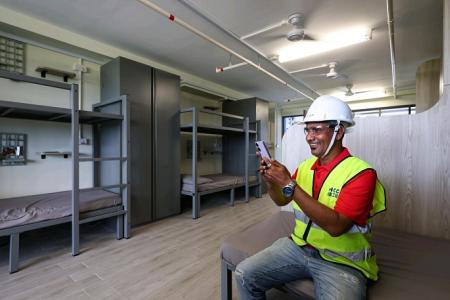MOM unveils new designs for migrant worker dormitories
A promise made in 2021 to transform the living quarters of migrant workers is a step closer to fruition, with the Ministry of Manpower (MOM) unveiling blueprints on Nov 17 for a government-owned dormitory that will offer more personal space, privacy and greenery for its residents.
With a fresh room layout and features like enclosed nooks on each floor for private phone calls, MOM’s upcoming dormitory in Tukang Innovation Lane in Jurong is expected to lead the way for the rest of the industry when it is ready in early 2026.
MOM said extensive consultations on the design of the 2,400-worker dormitory had been conducted with workers, non-governmental organisations, industry associations and an advisory panel comprising experts in architecture, healthcare infrastructure and other subjects.
After hundreds of design iterations, a mock-up of the new dorm room was displayed at a migrant worker recreation centre in April to gather more feedback, the ministry added.
In an update on Nov 17, MOM said the new Tukang dorm is one of seven upcoming dormitories being built to a set of higher standards, that existing dorms are required to meet only by 2040.
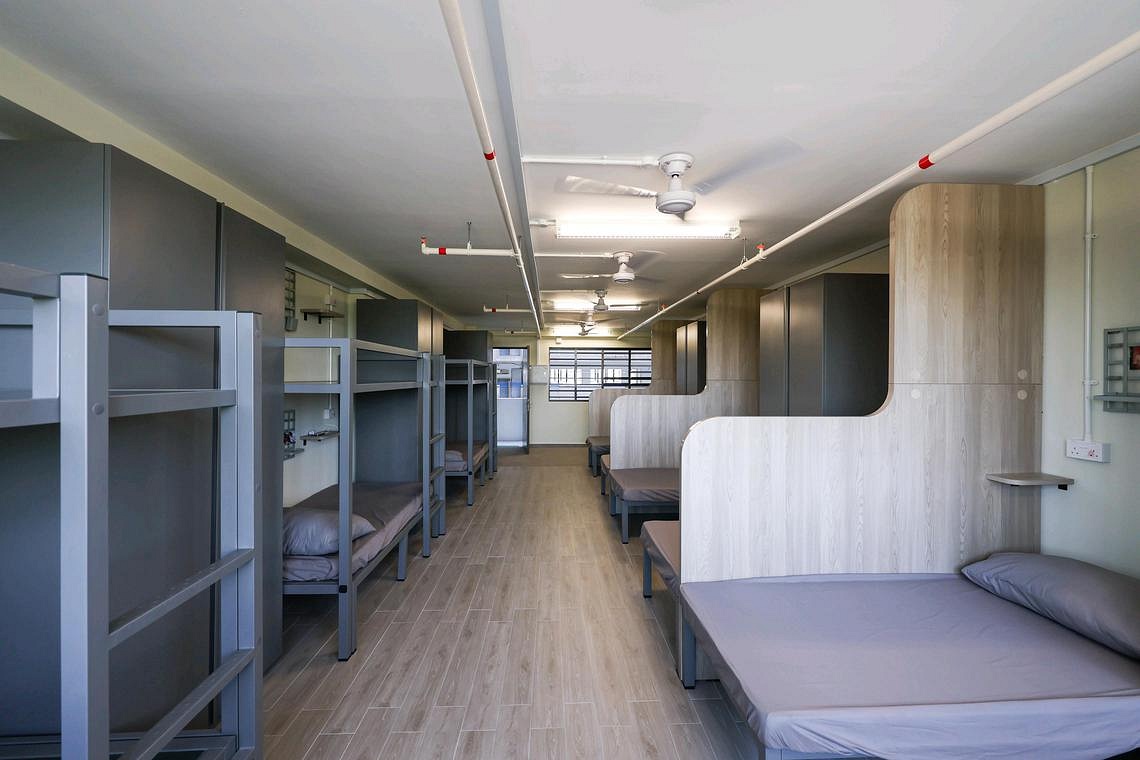
It is also the first of two dormitories that will be built and owned by MOM, with the other government-owned dorm in Sengkang West expected to be completed around mid-2028.
This is part of ongoing efforts by MOM to raise the quality of foreign worker accommodations in Singapore, after the Covid-19 pandemic laid bare the conditions of worker dormitories here.
Unlike the vast majority of today’s dorms, where up to 16 workers share a room, sometimes more, there will be a cap of 12 residents per room at MOM’s Tukang dorm. Each resident will get at least 4.2 sq m of living space, MOM said, up from 3.5 sq m of living space in most dorms now.
Residents of the new MOM dorm will also have access to en-suite toilets and in-room Wi-Fi. These are amenities that migrant workers here largely do not enjoy yet.
This is because dormitories built before September 2021 have been given a transition period to implement the higher standards in phases, to ensure minimal disruption to the dormitory bed supply.
Newer dorms built after September 2021 have had to abide by the more stringent requirements.
A big difference between MOM’s Tukang dorm and most of the 1,000 existing dorms here is the type of beds that will be used and how they will be configured.
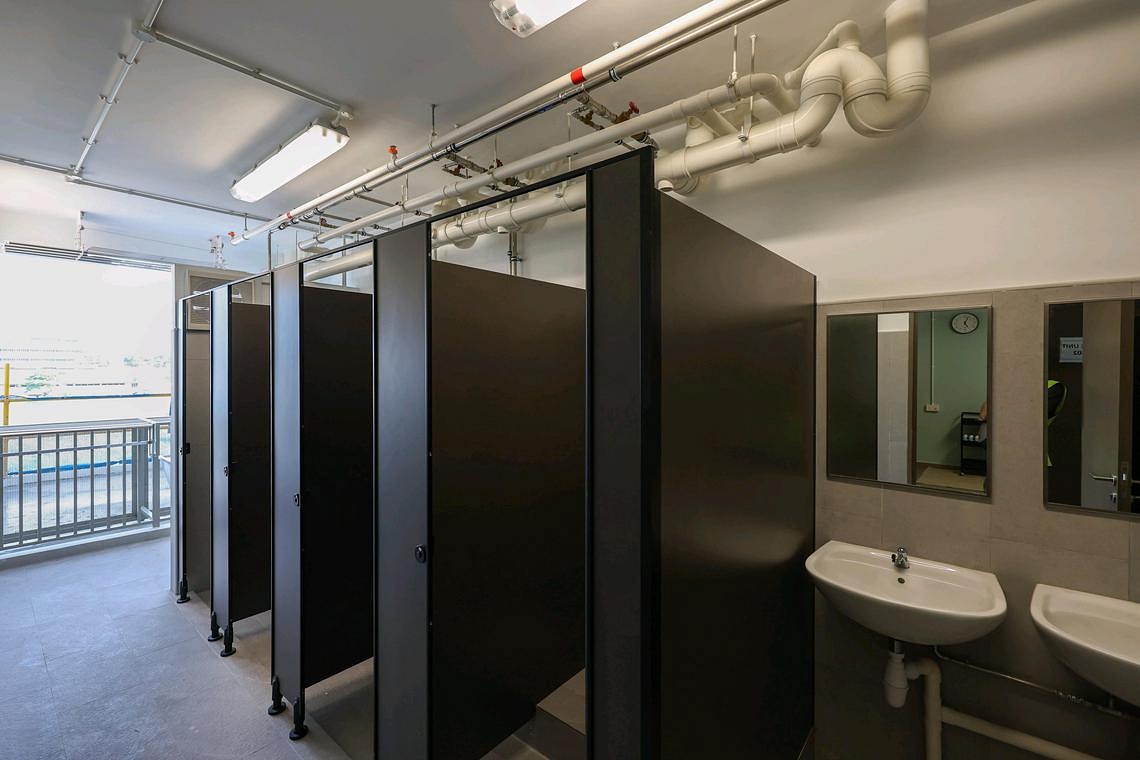
In each of the 210 rooms at the Tukang dorm, six of the 12 beds will be single-deckers.
The remaining six beds will have a loft bed design, with lower bed frames that are independent of the one above, so as to minimise disturbance to those sleeping on the lower bunk, said MOM.
Sleep disturbances due to bunk beds used in existing dorms was one of the bugbears raised by the workers MOM had consulted.
Outside their rooms, residents of the new Tukang dorm will be able to make use of multiple green spaces within the dorm’s premises to play sports or relax.
MOM said it has worked with the National Parks Board on landscaping improvements, which are aimed at creating a home-like atmosphere for workers.
For instance, plants and trees that are familiar to migrant workers will be grown within the dormitory premises. They include champak and neem trees, which are native to South-east Asia and the Indian subcontinent.
In creating a more conducive living environment, the design of the new Tukang dormitory also allows for a more efficient use of space.
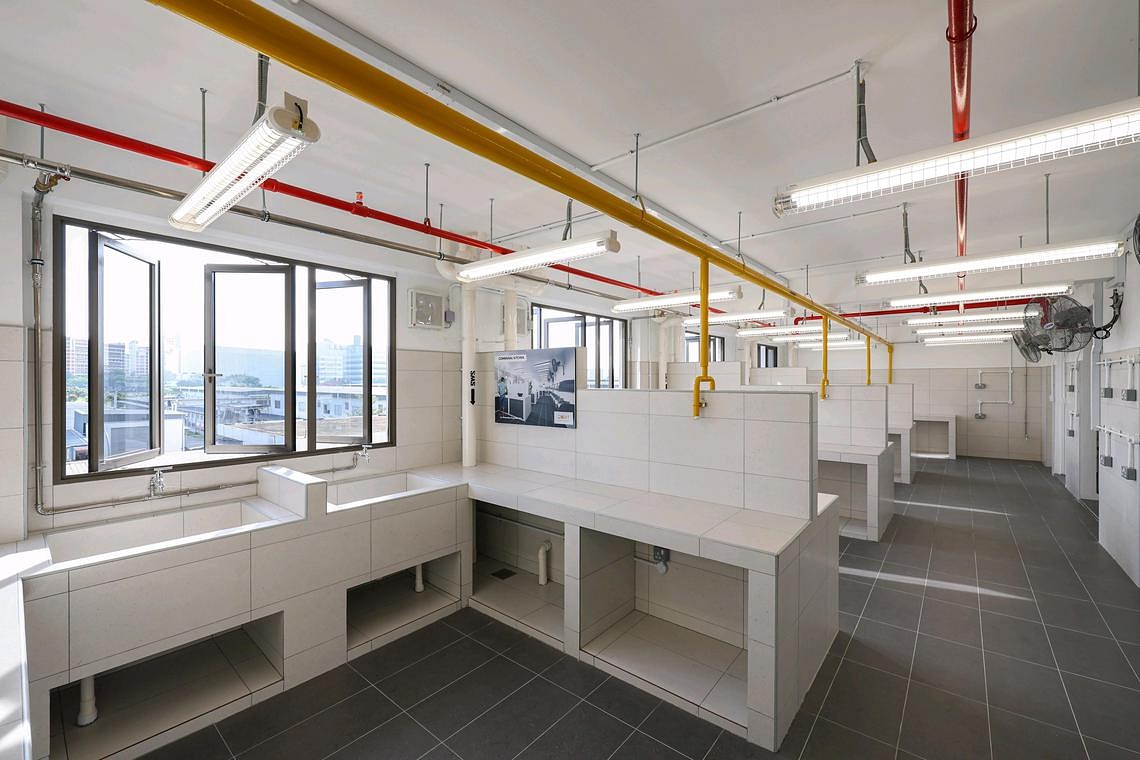
For example, communal kitchens that will be located on each floor of the new dorm, have been designed to reduce overcrowding, and communal dining areas can be repurposed as social and recreational spaces, MOM said.
The new dormitory has also been designed with future public health threats in mind, with colour-coded access routes making it easier for workers to find their way around, and to physically segregate them should the need arise, MOM added.
In addition, there will be multiple entry and exit points to prevent congregation, and automated thermal scanners at gantries to identify residents with high temperatures.
Other technological solutions in the pipeline include a digital access control system that will streamline the check-in process for dorm residents.
These solutions will be implemented by NESST Singapore, a company limited by guarantee set up by MOM to run the new Tukang dorm with private sector partners.
The corporate entity will allow the ministry to be directly involved in dorm operations so it can test new innovations and grow its own dorm management capabilities.
The idea is for best practices to be shared with the wider dormitory industry so that some of the innovations at Tukang will be adopted more widely, said MOM.
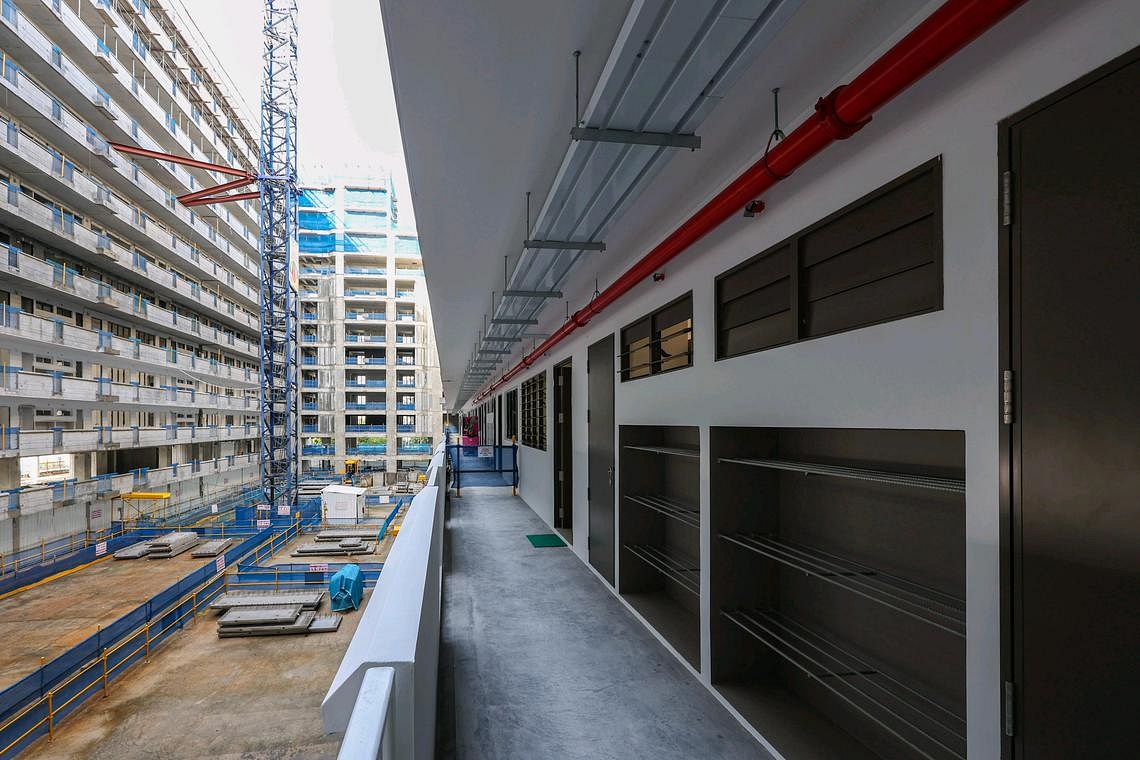
Meanwhile, a deeper understanding of how dorms here operate will also enable MOM to develop better policies and regulations, the ministry had said previously.
While beds at the new dorm will come at a higher price than those offered at older dorms, MOM did not say how much each bed will cost. MOM said that NESST will adopt a “calibrated pricing strategy” to ensure bed prices are competitive and in line with industry norms.
“NESST has engaged in extensive consultations with employer groups to ensure that bed pricing aligns with the expectations of both employers and workers,” MOM added, pointing to the need to ensure the new dorm is commercially viable.
The ministry also said response has been positive so far, with employers like construction firm Bachy Soletanche already expressing interest in securing some of rooms.
Get The New Paper on your phone with the free TNP app. Download from the Apple App Store or Google Play Store now

